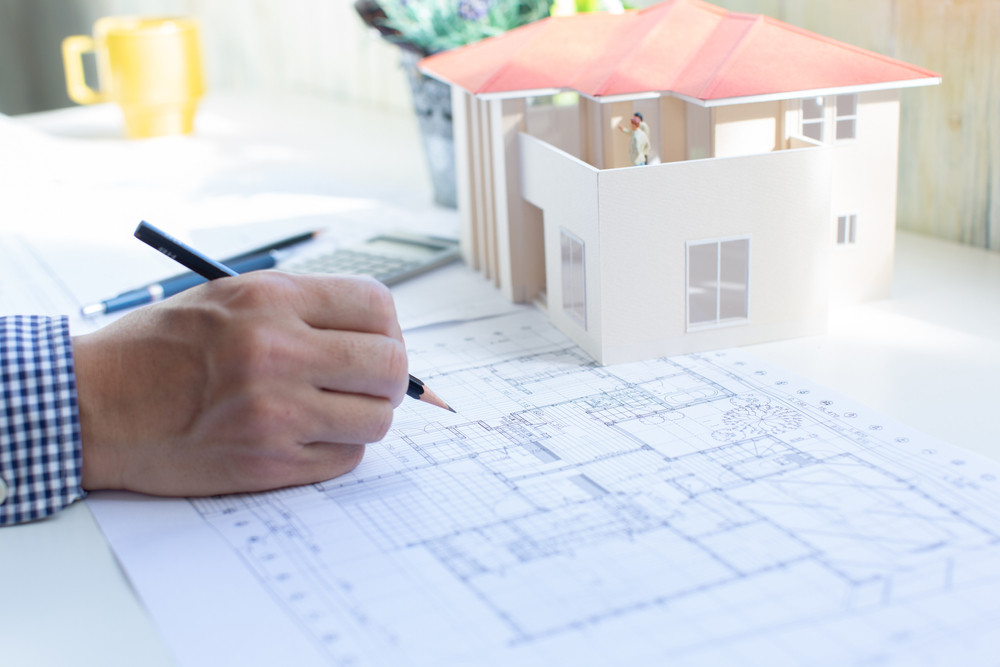The Creative Refine Behind Effective Jobs from CDA Architects
Recognizing the Collaborative Refine In Between Designers and Engineers in Modern Construction Projects
The collective process between engineers and engineers is necessary in contemporary building and construction tasks, as it balances layout intent with engineering expediency. Discovering these dynamics exposes understandings that could substantially impact job end results and overall industry requirements.
The Importance of Partnership
The collective harmony between architects and engineers is crucial for the successful awareness of any type of building and construction project. This partnership brings with each other distinctive knowledge and point of views, making it possible for the integration of innovative style with functional design remedies. By collaborating, architects and engineers can guarantee that a task not just meets aesthetic and functional requirements but likewise follows security, sustainability, and monetary restraints.
Cooperation cultivates a common vision, promoting the placement of objectives and assumptions from the start. This positioning is critical in resolving possible obstacles and mitigating dangers that might occur during the project lifecycle. A collaborative approach allows for the reliable appropriation of sources, enhancing both time and cost.
The importance of cooperation reaches the iterative process of layout and building, where comments from engineers can educate architectural decisions, bring about even more possible and lasting styles. On the other hand, architects can motivate engineers to think artistically about just how to accomplish structural honesty without jeopardizing artistic intent. Eventually, the collaborative partnership between engineers and designers is not merely helpful; it is essential to the production of top notch, functional, and cutting-edge developed settings that satisfy the demands of society.
Interaction Techniques and Devices
Effective interaction techniques and tools are essential for promoting cooperation between designers and designers throughout the job lifecycle. Developing clear channels of interaction is necessary to make sure that all employee are lined up with task goals, timelines, and duties. Regular meetings, both in-person and digital, provide chances for stakeholders to review progress, address worries, and make educated choices.
Using task management software application, such as BIM (Structure Details Modeling) platforms, improves partnership by making it possible for real-time sharing of design modifications and technical specs. These devices promote transparency, enabling designers and designers to envision changes and assess their effect on the general job.

Shared Goals and Task Vision

Establishing shared objectives involves open dialogue and an extensive understanding of each technique's contributions. Designers typically Look At This concentrate on layout intent, spatial relationships, and individual experience, while designers stress structural stability, systems capability, and compliance with policies (cda architects). When these point of views are straightened, the result is a cohesive job that complies with both imaginative aspirations and technical expediency
In addition, a distinct project vision fosters responsibility amongst group participants, urging each individual to take possession of their role in achieving the desired outcome. Routine check-ins and collective workshops can additionally enhance this dedication, enabling changes to be made as the task advances. Ultimately, a common vision not Resources just boosts synergy yet additionally boosts the top quality of the last deliverable, bring about effective task conclusion.
The Function of Innovation
Leveraging modern technology has actually become vital in boosting collaboration between designers and engineers. Structure Details Modeling (BIM) stands out as a crucial technology, allowing both designers and designers to produce thorough 3D versions that envelop design intent and structural integrity.
Furthermore, cloud-based platforms allow seamless partnership, permitting task stakeholders to accessibility and upgrade task information from anywhere. This cultivates a society of openness and liability, as adjustments can be tracked and assessed in real-time. In addition, mobile applications more boost interaction, supplying on-site groups with instant access to project specifications and updates.
Emerging technologies such as artificial knowledge and equipment understanding are additionally starting to play a function in predictive analysis, aiding groups determine prospective issues before they emerge. Inevitably, the function of innovation in architecture-engineering collaboration not just boosts process efficiencies but additionally improves development, leading to even more effective project end results. By accepting from this source these technological advancements, engineers and engineers can ensure an extra cohesive and productive joint process throughout the construction lifecycle.
Instance Research Studies in Effective Partnerships
Numerous instance research studies highlight the extensive effect of efficient collaborations between architects and engineers on job end results. One notable instance is the partnership on the High Line in New York City, where landscape designers, engineers, and metropolitan planners collaborated to transform a deserted rail line right into a dynamic public park. This multidisciplinary strategy not only boosted the aesthetic high quality yet likewise made certain structural safety and security and environmental sustainability.
One more excellent case is the style and building and construction of the Sydney Concert Hall. The collaboration between designer JÃ ¸ registered nurse Utzon and architectural engineer Ove Arup exhibited cutting-edge problem-solving. Their partnership enabled the renowned shell-like style while resolving complex engineering difficulties, inevitably leading to an ageless building masterpiece.
The Burj Khalifa in Dubai better shows the significance of collective initiatives. cda architects. The assimilation of style and engineering knowledge allowed the task group to attain unprecedented heights while adhering to security policies and visual vision
These instances highlight the relevance of interaction, trust fund, and shared purposes. In today's complex construction environment, such partnerships are important to navigating difficulties and providing jobs that satisfy both functional and visionary goals.
Conclusion
In final thought, the partnership in between designers and engineers is essential for the success of modern-day building projects. Reliable communication strategies, a shared project vision, and the combination of advanced modern technologies are important components that promote this partnership.